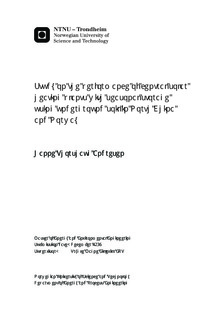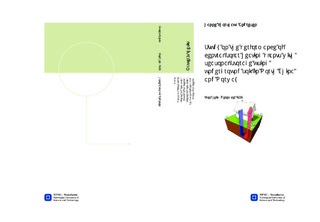| dc.description.abstract | This thesis involves the work on a combined system consisting of a solar collector, a geothermal heat pump and borehole ground storage. To fully utilize solar energy this study is based on a heating system deigned to store the solar thermal energy in an underground storage, using U-tube heat exchangers. Renewable energy sources are habitually out of phase with the heating demand, which makes them challenging to fully exploit. Heat from the underground thermal energy storage will be discharged when the solar energy is not sufficient enough, as for the winter months. A simulation model, developed in TRNSYS, is used to simulate the performance of the proposed combined system. The heat load is a single residential building, and the simulation is performed for two different locations. Their difference in design and performance is then analyzed and discussed. The locations used for the system simulations are Trondheim in Norway and Siping in China.
The complexity of a combines system is high due to several options when deciding on the system design. Solar collectors will lift the ground source temperature and in this way reducing the operation time of the heat pump. This will reduce the electricity use in combines systems. The purposes of this study have been to design a combined system for a single house at two different locations, Trondheim (63°N, 10°E) and Siping (43°N, 124°E). Studies on the performance of these two systems have then been performed. The focus has been on the thermal energy ground storage, consisting of several boreholes and its temperature behavior. The simulation software TRNSYS was used to analyze the interaction between the different components, the heat losses and gains, the electricity savings and the load requirement. The concept house has been designed in TRNBuild and Meteonorm provides the metrological data used for the different locations. A base case was used as stepping stone for the system optimization; the base case is bases on previous related work.
The system is divided into four different modes simulated separately in TRNSYS. The four simulation modes were solar thermal ground storage, solar direct heating, direct heat exchange with the ground storage and geothermal heat pump. The duration of the modes was divided into the storage season and the heating season.
With the intention to achieve a sufficiently high enough storage end temperature for direct heating of the building when needed, the system design parameters where chosen. The results of the simulation confirmed that the size and design of the ground storage is of great importance The resulting design for the system located in Trondheim consists of 11boreholes spaced 1.5m apart. However for Siping the optimal design consists of 4 boreholes with a pacing of 2.5m. Both systems has ground storage volume of 623.24m3 at 30m depth, a solar collector of 200m2 and a water tank with a volume of 10m2. With these parameters the storage end temperature was above 40oC for both and compliable for heating. The heating season was found to be from September to March for Trondheim and from October to May for Siping.
Simulations of the solar direct heating mode show that this mode can cover 19.2% of the heating load for the system located in Trondheim and as much as 47.5% for the system in Siping. The direct heat exchange with the ground covers 27.9% of the heating load in Trondheim, only 11.97% of the heating load is covered by this mode for Siping. The geothermal heat pump covers the largest part of the heating load in Trondheim with 52.9%, while it covers 40.53% of the heating demand in Siping. The initial depth of 30m resulted in freezing boreholes for both location and consequently the depth was changed to 150m for Trondheim and 200m for Siping. The COP was found to be 2.78 and 2.54 for Trondheim and Siping respectfully. | |

